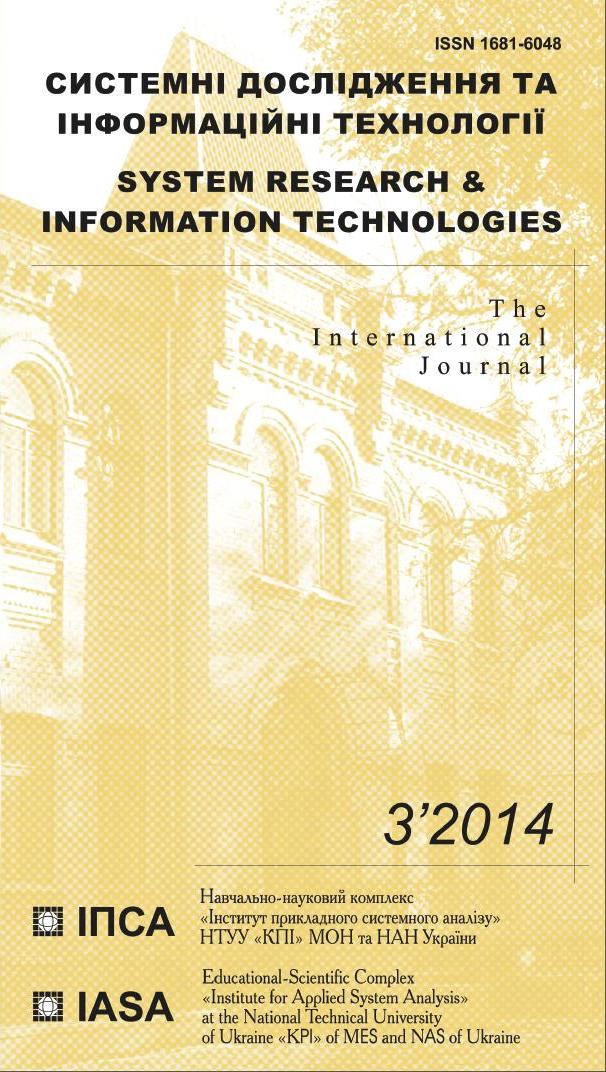Forecasting the information quality
Abstract
This paper considers information quality dimensions (Data Quality metrics). The approach and information technology to estimation and forecasting the data quality metric, which describes the accuracy of the information is proposed. A brief analysis of prior research on various approaches to defining metrics of Data Quality is presented. Nonlinearity of the data quality metric of accuracy makes it possible to forecast its future behavior using a stochastic volatility model (MSV), in which the Gibbs algorithm is used for parameter estimation. It is suggested to apply the information technology developed for forecasting the volatility of the exchange rate to forecast the future behavior of the uncertainty measure of the information accuracy. Forecasting of the accuracy measure of information has a key influence on the decision-making process.
References
Ballou D. P., Wang R. Y., Pazer H. & Tayi G. K. Modeling information manufacturing systems to determine information product quality // Management Science. — 1998. — № 44 (4). — P. 462–484.
Lee Y.W., Strong D.M., Kahn B.K. & Wang R.Y. AIMQ: A methodology for information quality assessment // Information and Management. — 2002. — № 40(2). — P. 133–146.
Catarci T., Scannapieco M. Data Quality under the Computer Science Perspective // Archivi&Computer. — 2002. — № 2. — P. 1–12.
Wang R.Y., Storey V.C. and Firth C.P. A Framework for Analysis of Data Quality Research // IEEE Transaction on Knowledge and Data Engineering. — 1995. — 7, № 4. — P. 623–640.
Z·hurovs'kyy M.Z., Pankratova N.D. Osnovy systemnoho analizu. — K.: Vydavnycha hrupa BHV, 2007. — 544 s.
Batini C. and Scannapieco M. Data Quality Springer-Verlag Concepts, Methodologies and Techniques. Data-Centric Systems and Applications. — Berlin: Springer-Verlag. — 2006. — P. 19–30.
Taylor S.J. Modeling Financial Time Series. — John Wiley, Chichester, 1986. — 268 p.
Kim S., Shephard N., Chib S. Stochastic volatility: likelihood inference and comparison with ARCH models // Review of Economic Studies. — 1998. — 65. — P. 361–393.
Bidyuk P.I., Konovalyuk M.M. Otsinyuvannya parametriv modeli stokhastychnoyi volatyl'nosti z vykorystannyam alhorytmu Hibbsa // Rehional'nyy mizhvuzivs'kyy zbirnyk naukovykh prats' "Systemni tekhnolohiyi". — Dnipropetrovs'k, 2011. — Vyp. 6 (77) — S. 12–27.
Bidyuk P.I., Konovalyuk M.M. Otsinyuvannya modeley stokhastychnoyi volatyl'nosti ta UARUH na Java, Naukovi pratsi. Komp"yuterni tekhnolohiyi. — Mykolayiv: ChDU im. Petra Mohyly, 2012. — Vyp. t. 191, 179. — S. 14–20.
Gilks W.R., Best N.G., Tan K.K. Adaptive rejection metropolis sampling within Gibbs sampling // Applied Statistics. — № 44. — P. 455–473.
Bidyuk P.I., Konovalyuk M.M. Prohnozuvannya volatyl'nosti valyutnoho rynku za neliniynymy modelyamy. Visnyk nats. univ. "L'vivs'ka politekhnika". — 2013. — # 751. — S. 257–265.
Engle R.F., Bollerslev T. Modeling the persistence of conditional variance. // Econometric Reviews. — 1986. — 5. — P. 1–50.
Bidyuk P.I., Konovalyuk M.M. Informatsiyna systema dlya prohnozuvannya volatyl'nosti valyutnykh kursiv // Naukovo-teoretychnyy zhurnal "Iskusstvennyy intellekt". — 2012. — № 4. — S. 292–302.

